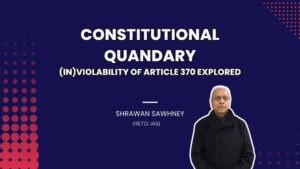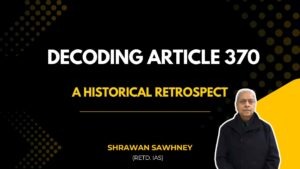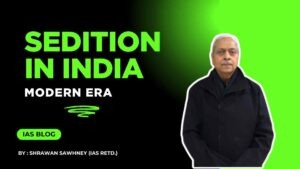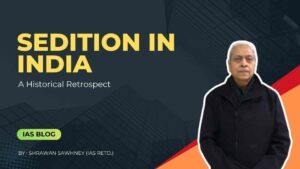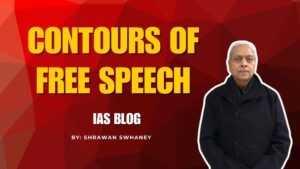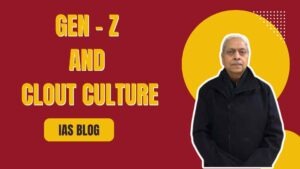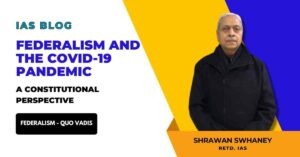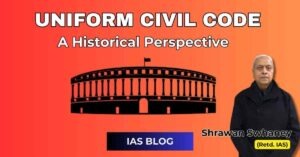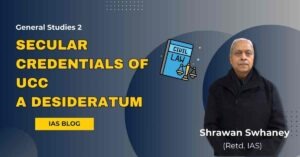Constitutional Quandary: (In)violability of Article 370 Explored
Constitutional Quandary: (In)violability of Article 370 Explored
Upon adoption of the Constitution of India, the preamble proclaimed, amidst other objectives, that we resolve to secure to all citizens fraternity assuring unity and integrity of the nation. At this juncture, it will be pertinent to bring up constitutional scheme of territorial description of our country. Article 1 of the Constitution proclaims India, that is Bharat, shall be a Union of States whose territories are specified in First Schedule. Jammu & Kashmir finds a mention at serial number 15 of the First Schedule.
The Preamble of the Constitution of Jammu and Kashmir, adopted in 1957, also echoed the same solidarity with the Union of India by postulating that “we the people of the state of Jammu and Kashmir, having solemnly resolved, in pursuance of the accession of this State to India…..to further define the existing relationship of the State with the Union of India as an integral part thereof.” Section 3 of the J&K constitution characterizes relationship of the State with the Union of India by legislating that “the State of Jammu and Kashmir is and shall be an integral part of the Union of India.”Interestingly, Section 147 of J&K Constitution lays down that “no Bill or amendment seeking to make any change in provisions of section 3 or the provisions of the Constitution of India as applicable, in relation to the State, shall be introduced or moved in either House of the Legislature.” To me, the Constituent Assembly of J&K reposed its conviction in the primacy of the Indian Constitution – which is – to borrow Hans Kelsen’s term “grundnorm,” – the ultimate source of authority in our legal system. In this pyramid-like legal structure, Indian Constitution, so to say, derives its inverse validity and authority from the Constitution of J&K also.
It is apposite to state that princely states, including Jammu & Kashmir, were not precisely independent sovereign states for they were under subsidiary alliance and subject to suzerainty of the British Crown. Sir William Blackstone, a noted English jurist, has defined sovereignty as “the supreme, irresistible, absolute, uncontrolled authority in which jura summi imperii (right of supreme dominion) resides. This concept is central to modern states and is considered as an essential attribute of sovereignty. Maharaja of Jammu & Kashmir, also didn’t enjoy“sovereignty,” in true sense of the term.Apex Court has held in the case of State Bank of India vs. Santosh Gupta (2017) 2 SCC 538 that the word sovereign has been “wholly omitted from the preamble of J&K constitution. There is no reference to sovereignty…….It is thus clear that the state of J&K has no vestige of sovereignty outside the Constitution of India.”Appropriately, Article 370 (1) (c) reiterates that Article 1 (that India is a Union of States as specified in First Schedule) applies to the state of J&K. The sole aim of this restatement is to impress upon that J&K is an integral part of our Union, though it may have had a separate constitution. Admittedly, Indian Union is a political entity in which provinces and princely states have come together with a more powerful central government. It is different from a federation where states and centre share authority more equally.
The current disagreement is that the special position of J&K could not have been unilaterally altered by Presidential notification dated 5th August, 2019 because the proviso to Article 370 (3)says that President may by public notification declare that this article shall cease to be operative with prior recommendation of the Constituent Assembly of the state. It is well known that the Constituent Assembly of J&K served out its term in 1957, more than 66 years ago without making any recommendation about retraction of special status of J&K. A significant query which presents itself is: did the Constituent Assembly of J&Kacquiesce in in the power of the President to unilaterallyannul special status of J&K as it was an “interim system” in the words of Shri N. Gopalaswami Ayyangar. It is an arguable point as to why the Constituent Assembly of J&Kdid not express its firm view about (in)violability of Article 370, before it wound up. An answer may be found in the interpretation of Article 370 (1) (d), by Supreme Court when it held that the power to modify includes the power to enlarge or add to an existing provision (S. Sant Singh vs. State of Jammu & Kashmir, AIR 1959 J&K 35) or to abrogate it, if necessary (Puranlal Lakhanpal vs. President of India (AIR 1961 SC 1519).
Another contention is that scrapping of distinctive position of J&K violates the doctrine of basic features. Hon’ble Supreme Court has laid down in a catena of judgments that Parliament can amend the constitution without altering its basic structure.Article 370 is self-applying Article and applies “ex proprio vigore,” without having to depend upon any other article for its enforceability and is a special provision for amending the Constitution in its application to J&K. The Presidential notifications under Article 370 (3) are not amendments of the constitution under Article 368. Apex Court has held that Article 368 does not curtail the power of the President under Article 370 (Sampat Prakash vs. State of J&K (AIR 1970 SC 1118).
President of India has been issuing the Constitution (Application to Jammu & Kashmir) Order since 1950 under Article 370. Under these orders, the constitutional relationship between the Union and State has constantly been adjusted and increasingly brought pari passuwith that existing between the Union and other states.Nevertheless, as the Apex Court delves into the matter, it becomes crucial to strike a balance between historical agreements and the evolving needs of a harmonious constitutional landscape. The enigma surrounding Article 370 encapsulates the intricate interplay of history, legality, and the aspirations of the people of Jammu & Kashmir within an integrated Indian Union.
(Concluded)
By: Shrawan Sawhney (IAS Retd.)
The Views expressed by the author are personal.
Notes on Constitutional Quandary: (In)violability of Article 370 Explored
📌 Context and Background
The Preamble of the Indian Constitution enshrines values like fraternity, unity, and integrity of the nation, which are foundational to understanding Article 370.
Article 1 of the Indian Constitution defines India, that is Bharat, as a Union of States whose territories are listed in the First Schedule. Jammu & Kashmir (J&K) appears at Serial No. 15.
🛡️ Article 370: Special Status of J&K
Article 370 granted temporary special status to the state of J&K after its accession to India in 1947.
It allowed J&K to have its own Constitution, Flag, and considerable autonomy — except in areas of foreign affairs, defence, and communications.
The provision was meant as an interim arrangement, as mentioned by N. Gopalaswami Ayyangar (one of the key drafters of Article 370).
📜 Jammu & Kashmir Constitution and Its Commitment to Union
The Preamble of the J&K Constitution (1957) affirmed the state’s accession to India and declared it an integral part of the Indian Union.
Section 3 of J&K Constitution: “The State of Jammu and Kashmir is and shall be an integral part of the Union of India.”
Section 147 of J&K Constitution: This section barred the J&K legislature from amending Section 3 or provisions of the Indian Constitution as applicable to J&K.
🧱 Concept of Sovereignty and Its Legal Status
Under British rule, princely states like J&K were under suzerainty, not fully sovereign.
The Maharaja of J&K had only limited powers under British dominance and wasn’t a fully sovereign ruler.
The Supreme Court, in State Bank of India vs. Santosh Gupta (2017), clarified that the word “sovereign” was omitted from the J&K Constitution, and the state had no sovereignty outside the Indian Constitution.
⚖️ Article 370 and Its Structure
Article 370(1)(c): States that Article 1 (Union of States) applies to J&K. This reinforced the idea that J&K is an inseparable part of India.
Article 370(1)(d): Allowed the President to extend provisions of the Indian Constitution to J&K, with “modifications and exceptions.”
Supreme Court interpretations (e.g. Sant Singh case, 1959 and Puranlal Lakhanpal, 1961) established that “modification” could mean amendment, enlargement, or even abrogation.
📅 Issue of August 5, 2019 – Abrogation Debate
On 5th August 2019, the President of India issued a notification revoking Article 370 via Article 370(3).
The issue: The proviso to Article 370(3) required the recommendation of the Constituent Assembly of J&K, which ceased to exist in 1957 without making any recommendation on Article 370’s abrogation.
Critics argue that the absence of this assembly means the President’s order was unconstitutional.
Supporters argue that since the provision was temporary and since the J&K Constituent Assembly didn’t assert Article 370’s permanency, the revocation is valid.
🧩 Basic Structure Doctrine Debate
It is contended that scrapping Article 370 might violate the basic structure doctrine (a doctrine laid down by the Supreme Court which bars Parliament from altering the basic framework of the Constitution).
However:
Article 370 is not a part of basic structure, as per the general consensus.
Presidential Orders under Article 370 are not amendments under Article 368, hence do not attract the basic structure test.
SC in Sampat Prakash vs. State of J&K (1970) upheld the President’s continuous powers under Article 370 even after the Constituent Assembly ceased to exist.
🔁 Presidential Orders and Constitutional Application
Since 1950, the President of India has issued multiple Constitution (Application to J&K) Orders under Article 370.
These orders gradually extended almost all major provisions of the Indian Constitution to J&K.
Over time, the asymmetry between J&K and other Indian states significantly diminished.
🧠 Constitutional Hierarchy and Grundnorm
The term Grundnorm (a concept by legal theorist Hans Kelsen) refers to the basic norm or the ultimate legal authority.
In India, the Constitution of India is the grundnorm.
The J&K Constitution, by accepting Indian Constitution’s supremacy, reinforced the primacy of the Indian legal order.
⚖️ Legal and Ethical Dilemmas
The debate around Article 370 abrogation is not just legal but also touches on historical agreements, popular aspirations, and the need for national integration.
The Supreme Court is currently examining the issue to ensure that constitutional processes were upheld while also respecting the aspirations of the people of Jammu & Kashmir.
🧭 Key Takeaways for UPSC
Article 370 was temporary, not permanent, but its revocation still raises legal questions.
The Indian Constitution is supreme, and J&K Constitution accepted this explicitly.
Doctrine of Basic Structure does not automatically apply to Presidential actions under Article 370.
SC judgments have consistently upheld the integrity of Indian Union and the constitutional validity of the extension of Indian laws to J&K.
Mains-Based Questions on Constitutional Quandary: (In)violability of Article 370 Explored
Q1. Article 370 was envisaged as a temporary provision, yet it became the fulcrum of a constitutional debate on federalism and integration. Discuss.
(GS Paper II – Polity & Constitution)
Model Answer:
Introduction:
Article 370 of the Indian Constitution conferred special status to the State of Jammu and Kashmir, reflecting its unique accession terms post-independence. Though labeled as a “temporary provision,” its application and eventual abrogation have been at the heart of debates on constitutional morality, federal structure, and national integration.
Body:
Temporary in Nature:
The term “temporary” in the marginal note of Article 370 signifies that it was intended as an interim arrangement until the J&K Constituent Assembly finalized the constitutional relationship with India.
This was acknowledged by N. Gopalaswami Ayyangar in the Constituent Assembly Debates.
Gradual Erosion of Autonomy:
Through Presidential Orders under Article 370(1)(d), most provisions of the Indian Constitution were extended to J&K over time.
Nearly 94 out of 97 Union List subjects became applicable to J&K.
Federalism vs. Integration:
India is a quasi-federal state with unitary bias.
While federalism suggests accommodation of diversity, Article 370 was viewed both as an enabler of asymmetrical federalism and a symbol of alienation.
Its abrogation in 2019 triggered debates on central overreach vs. complete integration.
Judicial Viewpoints:
In Sampat Prakash (1970), SC upheld the President’s power to continue modifying Article 370 post the J&K Constituent Assembly’s dissolution.
In Santosh Gupta (2017), SC clarified that J&K had no vestige of sovereignty outside the Indian Constitution.
Conclusion:
While Article 370 was meant to be temporary, it acquired a political and emotional permanence over decades. Its abrogation has realigned the constitutional order with the Union’s idea of unity, though it continues to test India’s ability to balance legal integrity with democratic legitimacy and regional aspirations.
Q2. Critically analyze the legal arguments surrounding the abrogation of Article 370 in August 2019 in light of the doctrine of basic structure and President’s powers.
(GS Paper II – Constitution & Judiciary)
Model Answer:
Introduction:
The abrogation of Article 370 via the Presidential Order of 5th August 2019 and subsequent parliamentary legislation altered the legal status of Jammu & Kashmir. This has triggered intense scrutiny regarding constitutional propriety, separation of powers, and the doctrine of basic structure.
Body:
Legal Basis of Abrogation:
Article 370(3) allows the President, with recommendation of the Constituent Assembly of J&K, to declare the Article inoperative.
Since the Constituent Assembly dissolved in 1957 without such recommendation, the Union substituted it with the J&K Legislative Assembly, which was under President’s Rule in 2019.
Critics argue this was legally untenable as the Constituent Assembly and Legislative Assembly are not interchangeable.
Presidential Powers vs. Legislative Mandate:
Under Article 356, Parliament exercises the powers of the state legislature. Thus, approval via Parliament during President’s Rule was deemed sufficient by the Centre.
SC in Sampat Prakash (1970) upheld the continued use of Article 370 powers post-1957.
Doctrine of Basic Structure:
Some argue that Article 370 was part of the federal structure, and its revocation violates the basic structure doctrine.
However, Presidential Orders under Article 370 are not constitutional amendments under Article 368, hence not bound by the basic structure test (Kesavananda Bharati case applies to Article 368).
Judicial Precedents Supporting Flexibility:
Puranlal Lakhanpal (1961) and Sant Singh (1959) upheld the President’s power to “modify” includes amend, enlarge, or even abrogate.
Conclusion:
The abrogation of Article 370 raises fundamental questions about constitutional process and political will. While legally defensible through Presidential powers and past judgments, it underscores the need for judicial clarity on whether such transformative changes respect both the letter and spirit of the Constitution.
Q3. How has the Supreme Court interpreted Article 370 in past cases? Do these interpretations justify its abrogation?
(GS Paper II – Indian Constitution & Judiciary)
Model Answer:
Introduction:
Article 370 has been the subject of multiple judicial interpretations by the Supreme Court, shaping its scope, function, and the nature of the relationship between the Union and Jammu & Kashmir. These rulings form the foundation for understanding the legality of its abrogation in 2019.
Body:
Key Supreme Court Judgments:
Puranlal Lakhanpal vs. President of India (1961):
Held that the power to modify under Article 370 includes the power to enlarge or alter provisions.
Set precedent for constitutional evolution in J&K through Presidential Orders.
Sampat Prakash vs. State of J&K (1970):
Upheld that Article 370 remains in force even after the J&K Constituent Assembly dissolved in 1957.
President continues to have modification powers under Article 370(1).
State Bank of India vs. Santosh Gupta (2017):
Stated that J&K does not have sovereignty, and the Indian Constitution is the supreme legal document.
Reiterated that J&K’s special status is subject to the constitutional framework of India.
Mohd. Maqbool Damnoo vs. State of J&K (1972):
Held that “Sadar-i-Riyasat” could be replaced with “Governor” by a Presidential Order under Article 370, reflecting flexibility in interpretation.
Interpretative Support for Abrogation:
The consistent judicial view has been that Presidential Orders under Article 370 are legitimate tools for altering Centre-State relations in J&K.
No ruling has ever declared Article 370 to be permanent or inviolable.
Conclusion:
The Supreme Court’s historical interpretation of Article 370 validates the progressive extension of Indian laws to J&K. While the political rationale for abrogation is debated, the judicial trend supports the constitutional method adopted for redefining J&K’s status within the Indian Union.
Q4. The abrogation of Article 370 is a turning point in India’s federal structure. Evaluate its impact on cooperative federalism.
(GS Paper II – Federalism)
Model Answer:
Introduction:
India’s federalism is described as quasi-federal, with a strong Centre and weak states. The revocation of Article 370 in 2019, which dismantled the unique constitutional status of Jammu & Kashmir, has profound implications for the theory and practice of cooperative federalism.
Body:
Impact on Asymmetrical Federalism:
Article 370 was a prime example of asymmetrical federalism, allowing different levels of autonomy for different states.
Its removal has reduced the diversity within Indian federalism, making it more uniform but less flexible.
Process and Concerns:
The use of President’s Rule to gain legislative consent raises questions about the autonomy of state institutions.
Critics claim this sets a precedent for unilateral action by the Centre, weakening federal principles.
Centralization of Power:
The bifurcation of J&K into two Union Territories (J&K and Ladakh) without a formal State Assembly’s consent further highlights central dominance.
It has triggered fears among other states with strong regional identities (e.g. Nagaland, Mizoram).
Implications for Cooperative Federalism:
Trust deficit between Centre and regions could widen.
Undermines the spirit of consultation, cooperation, and consensus, which are foundational to cooperative federalism.
Positive Outcomes:
Brings uniformity in legal framework, simplifies governance, and ensures equal rights for all Indian citizens in the region.
Potentially paves the way for development and integration.
Conclusion:
While the abrogation of Article 370 aims at greater national unity, it also challenges the principles of consensual federalism. For cooperative federalism to thrive, future Centre-State interactions must prioritize dialogue over dominance.
-
Constitutional Quandary: Inviolability of Article 370 Explored
Upon adoption of the Constitution of India, the preamble proclaimed,... -
Decoding Article 370 – A Historical Retrospect
The Apex Court is currently hearing petitions disputing the amendment... -
Sedition In India-Modern Era
English inhabitants in India requested the then Indian rulers to... -
Sedition In India – A Historical Retrospect
Sedition is perhaps the very vaguest of all offences known... -
Contours of Free Speech
Recent a spate of cases against stand-up comics Munawar Faruqui,... -
Generation-Z And Clout Culture
Generation Z, also known as Gen Z-ers and Zoomers, is... -
Community Resources :An Equitable Landscape
Community Resources: An Equitable Landscape Table of Contents Blog - Community... -
Federalism and the Covid-19 Pandemic: A Constitutional Perspective
Recently, an article in a leading English national daily made... -
Uniform Civil Code – A Historical Perspective
Article 35 of the draft Constitution of India provided that... -
Secular Credentials Of UCC – Shrawan Sawhney
Recently, the 22nd Law Commission of India has set the...


